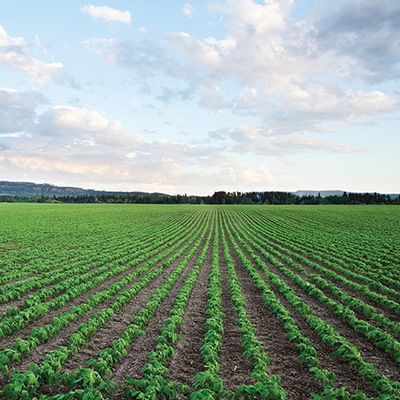Ag Retail Roundtable: State Of The Industry In 90 Minutes
The annual Agricultural Retailers Association (ARA) meeting is a great gathering place for many of the industry’s most influential representatives. In this spirit, CropLife magazine (and several of its sponsors) have used this venue to bring together several of the leading ag retailers to debate in its annual State of the Industry Roundtable event. The 2012 ARA was no exception, with leaders from five of the nation’s largest ag retailers taking part in the 4th annual State of the Industry Roundtable during an informative 90-minute session.
“This is a great place to get-together to discuss all the key issues and trends affecting our market, now and going forward,” said CropLife Group Editor Paul Schrimpf during the meeting’s opening moments.
In attendance at the 2012 meeting were Doug Busdeker from The Andersons, Jeff Eggleston from Hintzsche Fertilizer, Dave Default from J.R. Simplot Co., Dan Weber from Ceres Solutions and Scott Firlus and Rick Grabowski from Wisconsin River Co-op. Also in attendance were Daren Coppock, head of ARA, a group of international trade association representatives from Canada, France and Brazil and State of the Industry sponsors including J.R. Simplot, SST Software and Winfield Solutions. To keep the discussion open, CropLife promised participants that it would not directly attribute any comments made during the roundtable event to them.
Water Worries
Not surprisingly, water – or the lack of it – dominated the early debate on top industry concerns. Although many of the roundtable representatives believed that the drought conditions that gripped much of the nation during 2012 didn’t severe damage the nation’s crop, most believed that another such “super dry weather” event in 2013 “would be difficult for many of the growers in our area to overcome.” In particular, several participants thought this situation would be made worse in parts of the Great Plains and West, where much of the crop is irrigated, because of further water use restrictions on top of the ones that were imposed during 2012.
Lack of water was also a concern for many ag retailers when it comes to transportation. As one State of the Industry participant pointed out, approximately $7 billion worth of commerce annually travels down the Mississippi and Illinois Rivers – and a sizable portion of this total includes the fertilizers and crop nutrients grower-customers rely on to keep their yields (and subsequent profits) up. “If we can’t reliably use river barges to move this product to where we need it, it will have to travel overland,” said one roundtable participant. “That would increase our costs significantly and, ultimately, the customers.”
Profit Drivers
During the State of the Industry roundtable, everyone acknowledged that being an ag retailer these past few years has been “good.” With commodity prices remaining high and grower-customers in a “spending mood,” the nation’s top ag retailers have experienced some of their most profitable years ever in terms of revenue.
Naturally, some segments of the ag retail business have risen above the rest when it comes to profitability. And although major crop inputs sectors such as fertilizer were key market drivers during 2012, they weren’t necessarily the main profit drivers for ag retailers, said roundtable participants. Instead, smaller niche items such as foliars for feeding and starter fertilizer provided much more profit for the country’s biggest ag retailers.
“This is being driven by a desire to increase yields in any way possible,” said one participant. “Using pre-applied nutrients and foliars can possibly increase yields three to five bushels per acre, and that’s an investment growers are willing to make with ag economics where they are today.”
In addition to growers, ag retailers are also willing to make some investments in their operations given how well the marketplace has performed recently. In particular, said roundtable participants, technology is an area where “substantial investment” is taking place. Many ag retailers were already equipping their field reps with smartphones and other mobile devices to improve their ability to communicate (with both the grower-customers and their home offices), with several more working with logistics packages designed to increase the efficiency of machine usage in the field.
“Right now, our only fear with implementing all this technology into our operations is the hope that it isn’t going to be outdated within the next two years,” said one participant.
Going forward into 2013 and beyond, many State of the Industry participants said market watchers should keep an eye on ag retail consolidation. The past few years, with market conditions very favorable, many companies have spent their time building up their revenues while servicing their existing territories. However, if the market should take a sudden downturn in the coming years, consolidation could come back “into vogue” as a way to increase a company’s bottom line and market penetration quickly.






